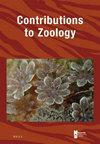The Hyalella species flock of Lake Titicaca (Crustacea: Amphipoda): perspectives and drawbacks of dna-based identification
IF 2.2
2区 生物学
Q1 ZOOLOGY
引用次数: 1
Abstract
Lake Titicaca, in the High Andes of Perú and Bolivia, harbours the world’s third most speciose ancientlake amphipod radiation on record. A minimum of nineteen species of Hyalella derived from at least five independent colonization episodes concentrate in this high altitude water body, although the actual species number present has not yet been established and could be much higher. Herein, we take advantage of the description of three new species (H. krolli, H. gonzalezi, and H. hirsuta) and the re-description of other two (H. solida and H. nefrens) to assess the feasibility of adopting a dna-based identification approach to Contributions to Zoology (2021) 1-54的的喀喀湖透明藻物种群(甲壳纲:片足纲):dna鉴定的前景与不足
喀喀湖位于秘鲁和玻利维亚的安第斯山脉高处,拥有有记录以来世界上物种第三多的古代湖泊两栖动物辐射。尽管目前的实际物种数量尚未确定,可能会高得多,但至少有五次独立定殖事件中产生的19种Hyalella集中在这个高海拔水体中。在此,我们利用对三个新物种(H.krolli、H.gonzalezi和H.hirsuta)的描述以及对另外两个物种(H.solida和H.neffens)的重新描述,评估采用基于dna的鉴定方法对《动物学贡献》(2021)1-54的可行性
本文章由计算机程序翻译,如有差异,请以英文原文为准。
求助全文
约1分钟内获得全文
求助全文
来源期刊

Contributions to Zoology
生物-动物学
CiteScore
4.00
自引率
4.50%
发文量
16
审稿时长
>12 weeks
期刊介绍:
Contributions to Zoology solicits high-quality papers in all systematics-related branches of comparative zoology (including paleozoology). Preference will be given to manuscripts dealing with conceptual issues and to integrative papers (e.g., ecology and biodiversity, morphology and phylogeny and character state evolution, phylogeny and historical biogeography, systematics and bioinformatics, bioinformatics and biodiversity, habitat disturbance and biogeography, etc.). Reviews and alpha-taxonomic contributions are considered for publication, but acceptance will depend on their high quality and exceptional nature.
 求助内容:
求助内容: 应助结果提醒方式:
应助结果提醒方式:


